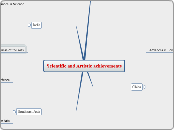a Elise Low 16 éve
829
History Chapter 7

a Elise Low 16 éve
829

Még több ilyen
Ikat
Batik
eg. hikayat, syair, pantun
written in Jawi from 15th century onwards
Angkor Wat
to show their devotion to their new gods
use damns or dykes to control water supply
2000 BCE
tomb of Emperor Qin Shihuang
Silk
2600 BCE
Tang, Song dynasty
Du Fu
Li Bai
Sima Qian wrote Shiji
Printer invented by Bi Sheng (Song dynasty)
Tang dynasty
Song dynasty
invented by Chinese or Indians
Han dynasty
device for detecting earthquakes
132 CE
Zhang Heng
Han dynasty
Shang and Han dynasties
Acupuncture
the insertion of tips of needles into specific parts of the body to relieve pain and help healing
cotton
Sanskrit poem
Ramayana
Mahabharata
Poem
Vedas
Ajanta caves
started in 600 BCE
eg. iron pillar of Delhi
the study of metals
Astronomy
the scientific study of the stars and planets
great mathematician: Aryabhata
pi, zero and decimal system developed